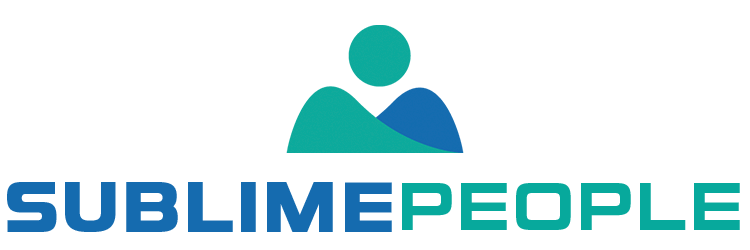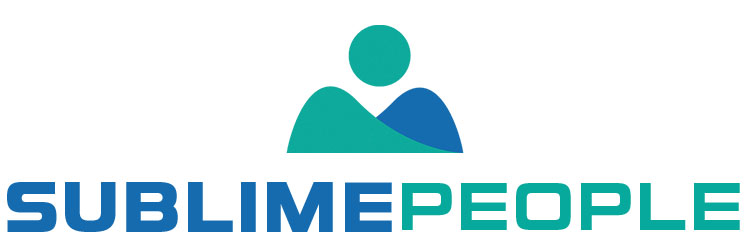Are you looking to make the recruitment process more efficient, organized, and streamlined? Then an application tracking system (ATS) might be the right solution for you. An applicant tracking system (ATS) is an incredible tool for any business looking to streamline its recruitment process. From automating tedious administrative tasks to gathering vital data points on each applicant, ATSs give organizations a comprehensive and efficient way of processing job applicants.
In this Article:
What is an applicant tracking system and how it works?
An applicant tracking system (ATS) is a software application used by organisations and recruiters to streamline the recruiting and hiring process. Using ATS technology, the hiring manager can automate administrative tasks like job postings and candidate searches while retaining valuable data on applicants such as resumes, application status, and assessments.
Specifically, the ATS:
- ATSs are used by organizations of all sizes to manage applicant information, post job descriptions, and pull qualified candidates from large applicant pools.
- Easily monitor the recruitment process from start to finish by tracking job seekers and their application status.
- With the use of Applicant Tracking Systems (ATS), human resources can effortlessly sift through potential hires, selecting only those that best fit the criteria set out for a position. Those on this shortlist are then automatically advanced to the following phase in recruitment.
Candidates seek application processes that are straightforward and convenient. The optimal applicant tracking systems provide people with a seamless way to apply for any position from any device without logging in, providing businesses access to a much broader array of applicants who can then be ranked based on abilities and background effortlessly.
The recruitment process is simplified with Applicant Tracking Systems, which permit users to easily provide feedback and notes about prospective employees. Moreover, some systems are even compatible with mobile devices for the convenience of busy recruiters and hiring managers alike.
What are the key features of applicant tracking system?
- Job Posting: Automatically post job openings to multiple job boards with one click.
- Resume Parsing: Extract important applicant data from resumes and store it in one central applicant profile.
- Search Engine Optimization (SEO): Use SEO to make job postings more visible in search engine results.
- Automated Job Posting: Automatically post job openings to multiple job boards with one click.
- Interview Scheduling: Schedule applicant interviews, send reminders, and track applicant responses online.
- Candidate Database: Store applicant data in an organized central location.
- Candidate Relationship Management: Track applicant interactions, contracts, and other important applicant data.
- Natural Language Processing (NLP): Automatically classify applicant information based on its content to quickly identify the best candidates.
- Artificial Intelligence (AI): Use AI algorithms to make recommendations on the best applicants for each job.
- Recruiting Metrics: Track applicant performance and recruiting progress over time to optimize the recruitment process.
- Candidate Experience: Create a positive candidate experience by keeping applicants informed throughout the entire hiring process.
- Recruitment Technology: Leverage advanced technology such as applicant tracking systems, resume parsing software, and applicant relationship management systems to streamline the recruitment process.
What are the benefits of an applicant tracking system?
An applicant tracking system is an incredibly powerful tool that can help streamline the entire recruitment process. From applicant tracking to job postings, and candidate relationship management system to automated interview scheduling. With so many benefits, it’s no wonder why ATSs are becoming more and more popular with companies of all sizes.
1. Automate administrative tasks during the hiring process
An applicant tracking system process simplifies your hiring process by automatically sorting through job applications, pre-screening resumes and categorizing applicant data. This saves time, money, and resources by making the recruitment process more efficient.
2. Gather data points
ATSs track applicant data such as name, address, email, phone number, and other relevant information. This makes it easy to identify qualified candidates and manage applicants’ profiles throughout the recruitment process.
3. Reach more job seekers
An applicant tracking system allows you to post your job listings on multiple job boards, giving you access to a larger pool of potential job seekers.
4. Streamline job postings
ATSs make it easy for you to create job postings that are optimized for applicant search engines, allowing potential candidates to quickly find your job listing.
5. Improve the job description
An applicant tracking system allows you to create targeted and effective job descriptions that accurately describe the role, responsibilities, and required qualifications for a particular position. This helps you attract more qualified candidates for the role.
6. Maximize hiring team efficiency
An applicant tracking system allows the hiring manager to assign tasks, delegate roles, and track applicant progress throughout the recruitment process. This makes it easy for your hiring team to stay organized and manage applicant data efficiently.
7. Access applicant tracking software
With recruiting software, you can quickly search through resumes, filter applicants based on experience or qualifications, and share applicant data with other members of your hiring team. You can also track applicant progress throughout the entire recruitment process using the recruitment software.
8. Enhance the candidate experience
ATSs make it easier for active job applicants to apply and submit their resumes online. This helps to create a positive candidate experience that enhances your organization’s employer brand.
9. Monitor recruiting metrics
With applicant tracking software, you can easily track applicant data such as time to hire, applicant sources, applicant response rate, and other key metrics. This helps you monitor your recruiting process and adjust your strategy accordingly.
10. Leverage artificial intelligence
With an ATS, you can leverage natural language processing (NLP) and artificial intelligence (AI) technologies to identify the best candidates for a particular role. This helps to quickly source and filter qualified job applicants from a larger applicant pool.
11. Improved inter-departmental communication
In addition, one major issue that can arise during the recruitment phase involves the absence of proper information about a particular department or the communication between a department and a person. An ATS helps to increase communications between recruiting teams in addition to with other participants.
The software also helps in simply sending messages, scheduling messages in large quantities, or assigning tasks to a centralized timeframe.
12. Flexible system for both employer & agency
Recruitment firms are benefiting from the use of ATS. This allows the client to quickly and effectively manage the search results and interview feedback in one place. The applicant tracking system also provides a more simplified and streamlined process for the applicant to apply for open positions.
13. Reduce manual resume segregation
Resume parsing technology allows applicant tracking systems to quickly scan and read through resumes, extracting the relevant information and placing it into applicant profiles. This eliminates manual data entry, saving time and reducing errors.
14. Automate job posting
ATSs also allow you to automate job postings on multiple job boards, making it easier for your organization to reach more qualified candidates. This helps to reduce the amount of time spent manually posting jobs on job boards and saves money from having to pay for job board postings.
15. Faster & better decisions
applicant tracking system helps to make the hiring process faster and more efficient by allowing recruiters to quickly identify qualified candidates. This enhances the overall applicant experience and reduces time spent searching for potential job openings. With an applicant tracking system, recruiters can make better decisions about which applicant is the most suitable for a specific role.
16. Improved cost-per-hire
Many firms are not aware of the cost associated with an applicant tracking system, but ATSs often reduce the cost-per-hire by allowing recruiters to quickly and efficiently review multiple applications. ATSs also save time in interviewing only those candidates who meet the criteria for a particular role.
17. Lower bounce rates on job ads
The applicant tracking system also helps to reduce the bounce rate of job postings by ensuring that all applicants receive accurate and relevant information about a particular role. This ensures that job seekers have access to detailed and up-to-date job postings, improving their overall experience with the recruitment process.
18. Data security
Finally, applicant tracking systems are designed with built-in data security and privacy protocols. This ensures that applicant data remains secure and confidential, allowing recruiters to focus on applicant qualifications instead of worrying about the safety of applicant information.
Limitations of ATS
Despite its advantages for employers, Automated Tracking Systems (ATS) have several shortcomings that can impede your chances of having your resume seen by the right people.
Keyword optimization
Since applicant tracking systems scan applicant resumes for relevant keywords, having the right ones is essential. Too many keywords can sometimes disqualify you as an applicant even if you are qualified.
Unclear job descriptions
If a job description isn’t optimized for an applicant tracking system and lacks the proper keywords, applicants may be seen as unqualified even if they are qualified.
Blind spot vetting
Some applicant tracking systems may miss some important applicant qualifications which will lead to your resume falling through the cracks.
Lack of human element
Although the ATS automates the applicant tracking process, it is still a machine. It can’t recognize applicant qualifications and accomplishments like humans can.
A step-by-step guide to choosing an ATS
Choosing an application tracking system (ATS) may seem like a daunting task, but it doesn’t have to be. Follow these five steps in selecting the most suitable ATS for you – We will break down this step for you so you find the optimal solution for the business.
Set a budget
The first step in finding the best applicant tracking system is to set a budget. ATSs are available in various price ranges and it’s important to find one that fits your budget while still providing necessary features.
Assess your needs
Once you’ve set a budget, it’s time to assess your needs. What are the primary needs of your organization? Are you looking for applicant tracking softwaer to help streamline applicant evaluation? Or are you looking for a tracking system that can automate applicant communication? Identify your organization’s needs before selecting an applicant tracking system.
Research & identify features
After setting your budget, it’s time to research different applicant tracking systems and begin identifying features that are important to you. Consider features like applicant tracking, applicant search, applicant profile management, automated job postings, and applicant matching.
Compare pricing & packages
Once you’ve identified the features that are important to you, start comparing pricing packages from different ATSs. Be sure to compare packages based on features offered as well as pay-per-use options versus monthly subscription costs.
Test & evaluate
Now comes the fun part – testing and evaluating applicant tracking systems. Ask for free trials or demos so you can get an in-depth look at how a particular ATS works and if it meets your needs.
How to Optimize Your Resume for Applicant Tracking Systems
Once you’ve found the applicant tracking system that best suits your needs, it’s time to start optimizing your resume for ATSs. To optimize your resume for applicant tracking systems, keep these tips in mind:
Use keywords from the job description
Make sure to use keywords from the job description throughout your resume. This will help applicant tracking systems recognize your resume as relevant to the job you are applying for.
Format your resume properly
Applicant tracking systems often have difficulty with resumes that aren’t formatted correctly. Make sure to use a standard font and size, include contact information at the top of the document, and keep it simple by avoiding excessive special characters or graphics.
Include relevant job titles
When possible, include the exact job title you are applying to in your resume. This will help applicant tracking systems identify you as a qualified applicant.
Use consistent formatting throughout
Keep the same font and formatting throughout your resume. Applicant tracking systems may have difficulty recognizing inconsistencies in format, so it’s important to make sure your resume looks the same throughout.
Bottom Line
An ATS is vital to the success of any business that relies on recruiting top talent. By automating the process of screening resumes and tracking applicants, you can save your team a significant amount of time and energy. Not only will an ATS help you streamline your recruitment process, but it will also give you access to powerful data insights that can help you make better hiring decisions.
If you’re looking for an ATS that fits your specific needs, check out our buyer’s guide. It includes everything you need to know about choosing an ATS, from the key features to look for to the different types of systems available on the market.



